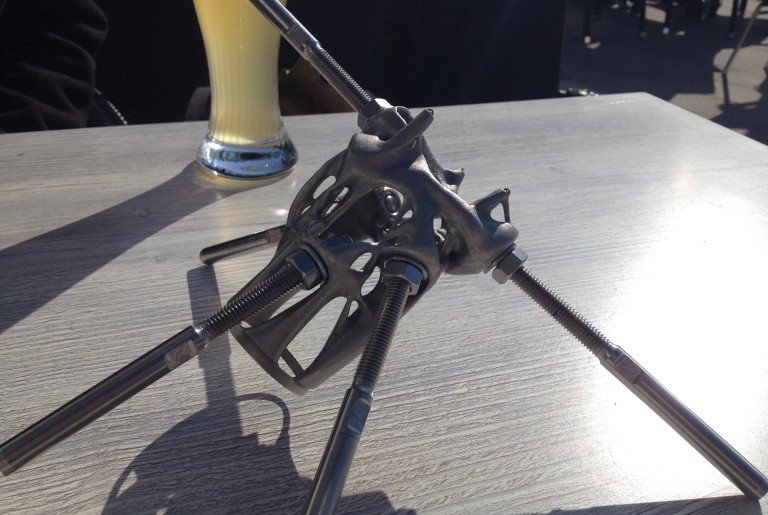Interview about the influence of 3D printing on design strategies with Salomé Galjaard for 3dprintingarchitecture.net
“That looks really scary, that thing! I can’t make anything of it, what it is.” said the waitress when she saw the 3D-printed metal node on the table in front of us.
I think probably most people would have said the same when looking at this oddly shaped metal object, which resembles more of a prop from a science fiction movie than a building element. I wonder if this relatively small object is a herald of things to come; if this is the way buildings will look like in the future. In the interview that follows I talk with Salomé Galjaard -team leader at Arup and initiator of their research into additive manufacturing- about this design and its impact on the building industry.
While working on an irregular tensegrity structure, which required about 1200 different metal nodes, Galjaard was inspired to look into additive manufacturing to find out if this fabrication method could provide a viable, more elegant, alternative for the otherwise laborious work of welding all nodes by hand. This resulted in a research project, in collaboration with various partners such as WithinLab (now part of Autodesk), that finally led to the first 3D-printed structural metal node. A “triumph” which was soon widely published in the media. After this initial success, the team continued developing the design, working on the printing technology and design tools at the same time. Now, about a year later, the node has evolved again, into an even more intricate, almost unrecognizable object.
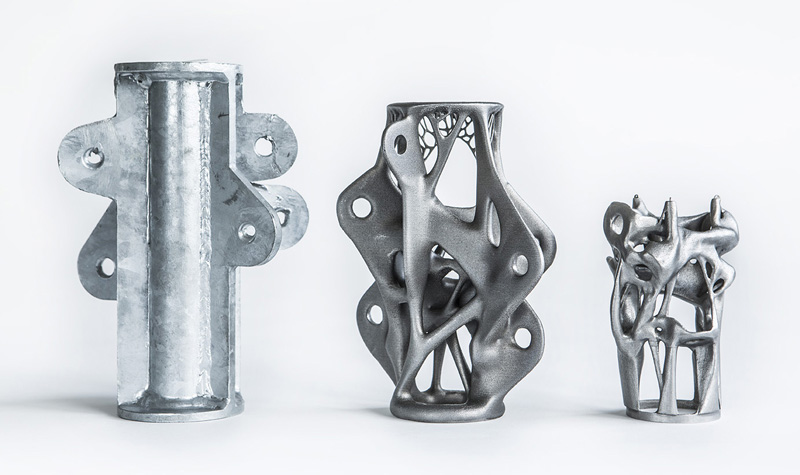
From left to right: the traditionally welded node, followed by the two consecutive iterations of the same node (image © Arup).
The first version of the design was basically a topological optimization of the original handmade node, Galjaard explains, which then was adjusted in some places according to the requirements of the 3D printing manufacturer. For the second model of the node, the team used the gained experience in 3D printing to go back to the drawing board and rethink the basic assumptions for the design, “while considering the 2nd node, we looked at the whole structure instead of the node alone, as we previously did in the first design”. The first design followed the traditional welded node, including the way of connecting the cables to the node, the toggle fork. A new approach to designing for this new fabrication technique rendered these toggle forks obsolete and the team redesigned the node and got rid of these connecting elements altogether.
As a result, the new node became much more compact, saving on material and printing time. Moreover, the new design had a positive impact on the structure as a whole: fewer separate building elements were needed, which meant a direct saving on material costs and made it simpler to build, thus saving money and time in the process. All the savings added, the total weight of the structure could be reduced by more than 40%.
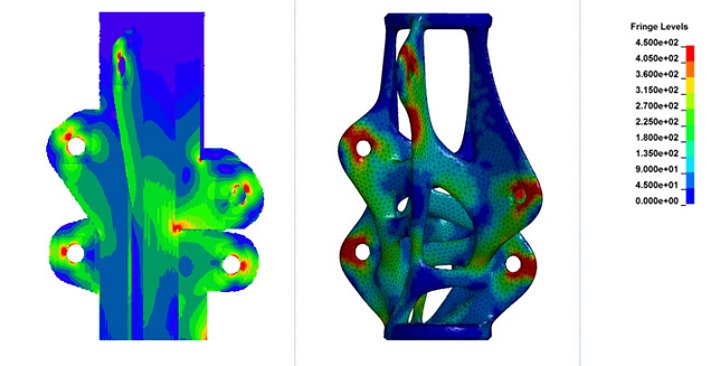
Structural analysis of the traditional and the first nodes. (image © Arup).
A few questions to Salomé Galjaard:
From your experience, what are the lessons to be learned and issues to take into account when designing for 3D printing? “For example, the fist node is printed in maraging steel with a little bit of support structure, which was easy to remove. The second node is printed in stainless steel, with more support structure, which appeared to be much harder to remove than when printing in maraging steel. (…) Also for 3D printing less is not always better. Less material might, for example, mean the use of more support structures and thus more production time, waste, and costs. (…) This is important to inform our material choice and has a big impact on the design. (…) It is very important to talk to the manufacturer in an early stage of the design, they have the experience and the right software tools.”
How can 3D printing innovate the building industry? “In the Buildings Sector, people often accept that solutions are unique, specially developed for one building only, and nothing is done with them afterward. I’m quite sure that at Arup, and other offices alike, a lot of innovations are developed, just for one occasion, which are never patented nor further developed. (…) The thing is that with 3D printing you don’t look at a single product, but at a method, a service, which ensures you don’t have to seek refuge in standard products anymore.”
Salomé cautions us not to be too excited and print anything and everything.“Ultimately 3D printing is only a technique and it is what we do with it that matters. I think we only should to do something with it if it adds value. To print a column or beam in metal doesn’t make sense, that is way too expensive anyway. (…) I think that with 3D printing we have an extra production technique, which enables us to make things that could not be made before.” To recognize when it is worthwhile to invest in this technique will take time. It will be a matter of trial and error, just like the Arup team needed to work through different versions of their node to get to the optimized one, “because we didn’t realize in the beginning what advantages could be achieved”.
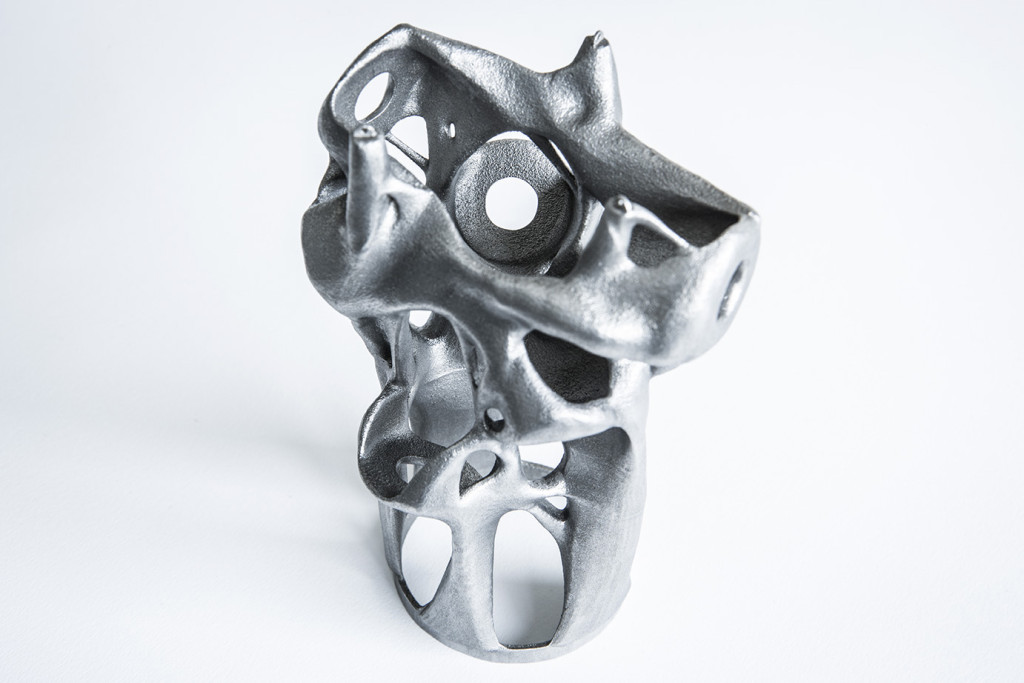
The second node shows a new way of connecting the cables (image © Arup).
There is still a lot of research to be done before 3D printing is generally used in the building industry on a bigger scale. Who do you think will lead this revolution? “I think firstly the engineers will have to research the technical aspects of it. After this, the architects can use the research results as inspiration and integrate them into their designs. Finally, the architects can come back to us to prepare the design for manufacturing. I think architects are the perfect group to recognize the opportunities for innovation in design, to find new forms.”
Thinking about what the hardest step will be to get the best out of 3D printing in the building industry, she concludes: “I myself think, technological solutions, the printing itself, computer models, tools, etc., are not the most difficult part. The real challenge, the most difficult part is to let go of the traditional design thinking and really see opportunities that are realistic and start designing with these. This will be a process of a lot of small steps…you start something, you learn from it, you will see more opportunities, etc. etc.”
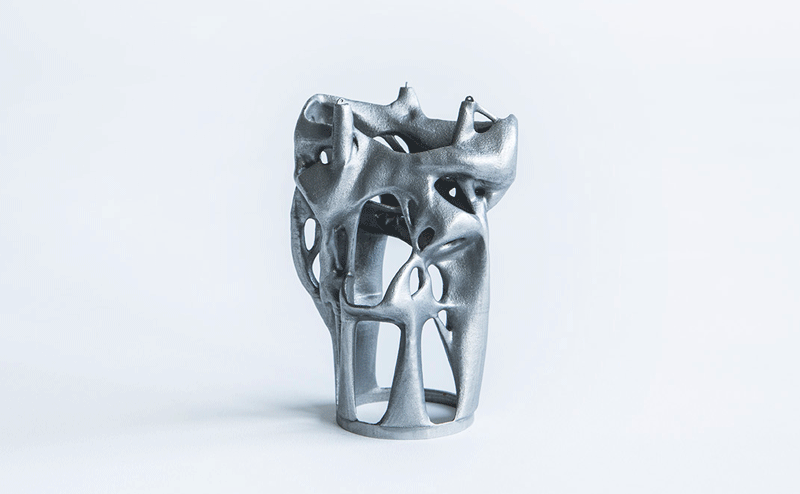
The second iteration of the node is seen from all sides (image © Arup).
This post was originally written for my website http://www.3dprintingarchitecture.net/ which was part of the ongoing research by Erno Langenberg “Even clay wants to be something”, exploring the possibilities of digital manufacturing ceramics in architecture, co-funded by the Creative Industries Fund NL.

